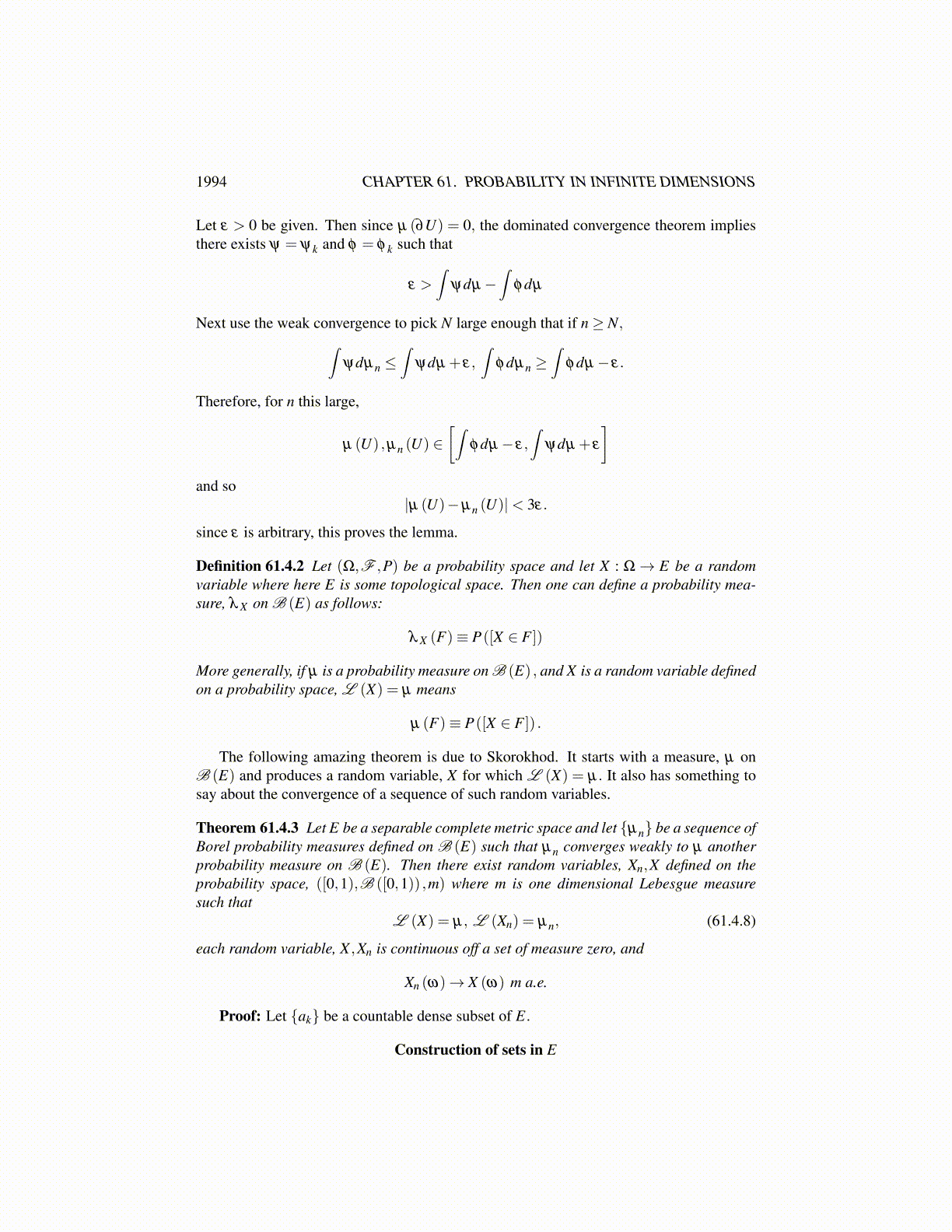
1994 CHAPTER 61. PROBABILITY IN INFINITE DIMENSIONS
Similarly,
λ n (H) ≤∫
Kn
φ ldλ n = limk→∞
∫Kn
φ ldµk
= limk→∞
∫Kp
φ ldµk =∫
Kp
φ ldλ p ≤ λ p (Vl) .
Then passing to the limit as l→ ∞, it follows
λ n (H)≤ λ p (H) .
Thus the restriction of λ p,λ p|Kn to the compact sets of Kn equals λ n. Then by inner regu-larity it follows the two measures, λ p|Kn , and λ n are equal on all Borel sets of Kn. Recallthat for finite measures on separable metric spaces, regularity is obtained for free.
It is fairly routine to exploit regularity of the measures to verify that λ m (F) ≥ 0 forall F a Borel subset of Km.Note that φ →
∫Kn
φdλ n is a positive linear functional and soλ n ≥ 0. Also, letting φ ≡ 1,
1≥ λ m (Km)≥ 1− 1m. (61.3.7)
Define for F a Borel set,
λ (F)≡ limn→∞
λ n (F ∩Kn) .
The limit exists because the sequence on the right is increasing due to the above observationthat λ n = λ m on the Borel subsets of Km whenever n > m. Thus for n > m
λ n (F ∩Kn)≥ λ n (F ∩Km) = λ m (F ∩Km) .
Now let {Fk} be a sequence of disjoint Borel sets. Then
λ (∪∞k=1Fk) ≡ lim
n→∞λ n (∪∞
k=1Fk ∩Kn) = limn→∞
λ n (∪∞k=1 (Fk ∩Kn))
= limn→∞
∞
∑k=1
λ n (Fk ∩Kn) =∞
∑k=1
λ (Fk)
the last equation holding by the monotone convergence theorem.It remains to verify
limk→∞
∫φdµk =
∫φdλ
for every φ bounded and continuous. This is where tightness is used again. Then as notedabove,
λ n (Kn) = λ (Kn)
because for p > n,λ p (Kn) = λ n (Kn) and so letting p→ ∞, the above is obtained. Also,